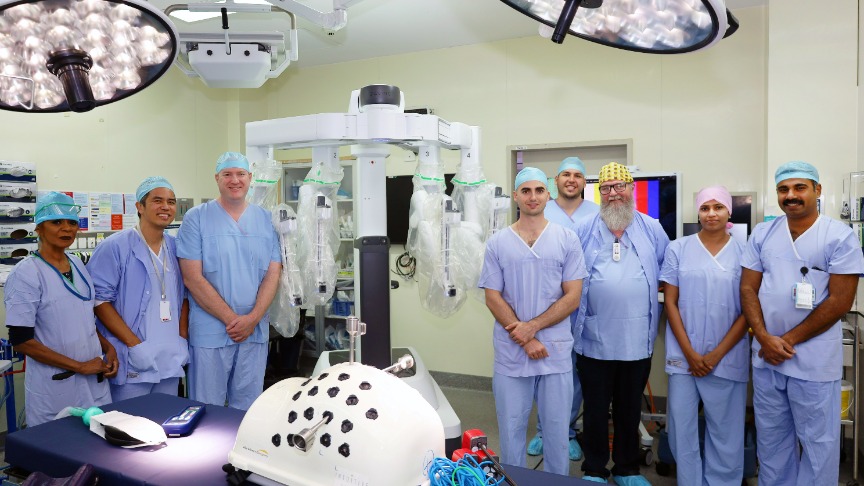
A state-of-the-art robot has joined the surgical ranks at QEII Hospital this April, marking the dawn of a new era in technological advancement for Metro South Health.
Engineered by Intuitive Surgical, the da Vinci Xi® surgical system enables surgeons to perform complex, minimally invasive procedures with superior precision and control.
The new addition is set to revolutionise surgical care and efficiency across the elective surgery waitlist at QEII, particularly in Urology, Gynaecology and General Surgery, which account for 79 percent of the hospital’s elective surgical output over the last two years (2023-2025*).
The new addition was unveiled in theatre on 30 April, as surgeons Dr Khuong Nguyen and Dr Joshua Grundy led QEII’s first-ever robotic-surgical rectopexy.
“We’re using the da Vinci Xi® surgical system for the first time here at QEII today,” said Dr Nguyen.
“This robot will enable us to complete more complex colorectal operations, and our Urologists will be able to use it for robotic prostatectomies, which is now the gold standard for most prostate operations. It’s very exciting to be able to offer this technology to the QEII community,” he said.
As robotic technology becomes increasingly integrated with modern surgical care and training, Dr Nguyen says the benefit to clinical practise and patient outcomes cannot be overstated.
“From a surgical perspective, there’s much more dexterity that we’re able to achieve with the help of this instrument. The tips are smaller, which allows us to get into spaces we couldn’t reach laparoscopically,” he explained.
“In the open era, patients would stay in hospital for three to five days post-op. In the laparoscopic era, they’d be staying for one to two days. With the robot, patients can potentially go home the same day as their surgical procedure.”
As well as going home sooner, patients also have the benefit of shorter recovery times, improved outcomes in complex cases, and a lowered risk of post-operative complications, pain and scarring.
As the Capacity Expansion Program gets underway to deliver 112 new beds and increase QEII’s surgical capacity by late 2027, the new technology is also shaping the future of surgical training at QEII.
“Many of us have practised robotic surgery at other facilities, and now we look forward to building it into the surgical program at QEII,” said Dr Nguyen.
“Our hope is to train the next generation of surgeons here and attract more talent by offering access to the latest technology.”